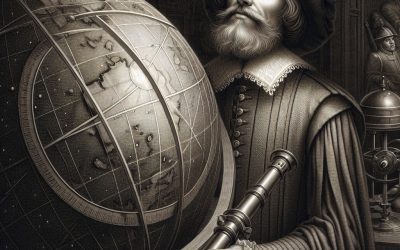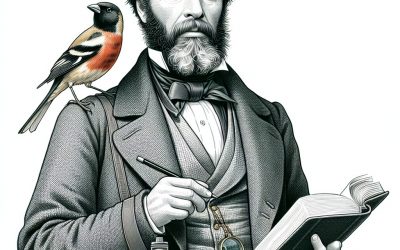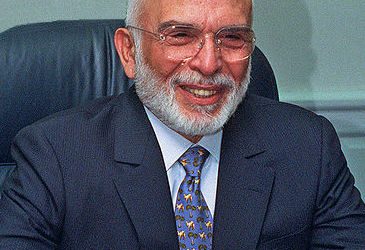TIMELINE
📜 Introduction to History
The Story of Humanity and the Lessons of the Past
History is the study of the past—of people, events, cultures, and civilisations that have shaped the world we live in today. It’s more than just a list of dates and facts; history is a vast and dynamic story of human experience—of triumph and tragedy, invention and discovery, conflict and cooperation.
At its core, history seeks to answer questions like:
-
What happened in the past, and why?
-
How did people live, think, and govern?
-
What caused wars, revolutions, or social change?
-
How have ideas, inventions, and institutions developed over time?
By examining evidence such as documents, artefacts, architecture, and oral accounts, historians piece together narratives of the past to better understand how societies evolved—and how they continue to influence the present.
History connects us to the lives of those who came before—from ancient empires and medieval kingdoms to modern nations and global movements. It helps us see patterns, understand cultures, and learn from both mistakes and achievements.
Studying history encourages critical thinking, empathy, and perspective. It reminds us that the present is shaped by the past—and that our choices today will become the history of tomorrow.
Uncovering the Genius of Galileo Galilei: Exploring the Life and Legacy of the Father of Modern Science
Galileo Galilei, born on February 15, 1564, in Pisa, Italy, was a renowned astronomer, physicist, mathematician, and philosopher. He is often referred to as the “father of modern science” due to his groundbreaking contributions to the fields of astronomy and physics. Galileo’s work revolutionized our understanding of the universe and laid the foundation for the scientific method that is still used today. Galileo Galilei was born on the 15th of February 1564 in Pisa, Italy. Galileo initially wanted to study medicine at the University of Pisa but he changed his mind and instead studied Mathematics and Philosophy. He became a professor of mathematics at the University of Pisa in 1589 and then a professor of mathematics at the University of Padua working on the mechanics of motion. His observations of Jupiter’s moons showed that Jupiter was the centre of its own system while still being part of ours. This supported Copernicus’ view that Earth was not the centre of everything (a view he had previously believed). He wrote these discoveries in a book ‘Sidereal Messenger’ (Starry Messenger) which was published in 1610. This book made him famous and helped him gain the position of court Mathematician in Florence. Portrait of Galileo Galilei (1636) aged 72 (Public Domain) His fame also brought him into the company of some very popular and influential people. In 1613 at breakfast with the Grand Duchess Christina while discussing the conflict between the Copernican view and the teachings of the Bible Galileo famously said that the Bible teaches how to go to heaven, not how the heavens go. This was the start of some unwanted...
Uncovering the Evolutionary Genius of Charles Darwin
Charles Darwin is one of the most influential figures in the history of science. Born on February 12, 1809, in Shrewsbury, England, Darwin’s groundbreaking theories on evolution and natural selection revolutionized the field of biology and natural history. His work laid the foundation for our understanding of the diversity of life on Earth and continues to shape scientific thought to this day. Darwin’s most famous work, “On the Origin of Species,” published in 1859, presented his theory of evolution through natural selection. This theory proposed that species evolve over time through a process of gradual change and adaptation to their environment. It challenged the prevailing belief in the fixity of species and provided a scientific explanation for the diversity of life on Earth. Summary Charles Darwin is a renowned biologist and naturalist who is best known for his theory of evolution. Darwin’s childhood and early life in England shaped his interest in natural history and science. The Voyage of the Beagle was a pivotal moment in Darwin’s life, where he collected specimens and observed the natural world in South America. The Origin of Species was a groundbreaking work that introduced the concept of natural selection and challenged traditional beliefs about the origins of life. The Descent of Man extended Darwin’s theory of evolution to include human beings and their place in the natural world. Darwin’s Childhood and Early Life in England Charles Darwin was born into a wealthy and well-connected family. His father, Robert Darwin, was a successful doctor, while his mother, Susannah Darwin, came from a prominent family of industrialists. Darwin’s upbringing was comfortable and privileged, allowing him...
The Last Emperor of China: Aisin-Gioro Puyi
In the tumultuous history of China, there was one individual whose life encapsulated the rise and fall of an empire. Aisin-Gioro Puyi, the last emperor of China, navigated a treacherous political landscape and experienced firsthand the dramatic changes that swept his nation. This article will delve into the life of Aisin-Gioro Puyi, exploring his role as the final emperor, his journey of transformation, and the legacy he left behind. The Last Emperor of China – Who was Aisin-Gioro Puyi? Aisin-Gioro Puyi was born in 1906, and at the tender age of two, he ascended the Dragon Throne as the Qing Dynasty’s final emperor. As a young child, he held a symbolic position of power, while real decisions were made by a regency council. However, the winds of change were brewing, and the imperial rule faced increasing challenges from revolutionary forces. The Rise of Revolution A century of imperial rule was met with growing discontent as societal and political changes swept across China. The desire for modernization and democracy ignited a series of uprisings against the monarchy. In 1911, the Xinhai Revolution led to the overthrow of the Qing Dynasty, marking the end of more than two thousand years of imperial rule. A Transformed Emperor Overnight, Aisin-Gioro Puyi’s life was upended. He was forced to abdicate the throne, and the Imperial Palace in Beijing became a museum, no longer serving as the seat of power. Puyi was thrust into a world he was ill-prepared for, as he was taken captive by warlord Zhang Xun and later placed under the control of Japanese forces during the turbulent Warlord Era. The Puppet...
Venera 1: A Milestone in Venus Exploration
Introduction Venera 1, a Soviet spacecraft, holds a significant place in the history of space exploration. Launched on February 12, 1961, Venera 1 attempted the first ‘flyby’ of Venus, marking a groundbreaking milestone in our understanding of our neighboring planet. In this article, we will delve into the mission of Venera 1, the challenges it faced, and the valuable insights it provided about Venus. Venera 1’s Mission: To Explore Venus Venera 1’s primary mission was to gather data on Venus by performing a flyby. Equipped with scientific instruments, the spacecraft aimed to study the atmosphere, magnetic field, and cosmic radiation surrounding the planet. This ambitious undertaking raised hopes for a substantial leap forward in Venus exploration. The Journey of Venera 1 Venera 1 embarked on its journey towards Venus with great anticipation. However, the mission encountered multiple challenges along the way. Despite these obstacles, Venera 1 bravely headed towards its destination, demonstrating the courage and determination of the scientific community. The Challenges Faced by Venera 1 Communication Breakdowns: During the mission, the spacecraft faced difficulties in maintaining communication with Earth, hampering the flow of scientific data. These communication breakdowns posed a significant obstacle to the success of the mission. Navigational Issues: Venera 1 struggled to accurately navigate its path towards Venus due to limited knowledge of the planet’s gravitational field and atmospheric conditions. These navigational challenges further complicated the mission. Venera 1’s Encounter with Venus: What We Found Despite the difficulties encountered, Venera 1 successfully approached Venus on May 19, 1961. However, it did not achieve the intended flyby. Instead, the spacecraft passed within approximately 100,000 kilometers of Venus...
The Red Scare: The Infamous Legacy of US Senator Joe McCarthy
The Red Scare was a period of intense anti-communist hysteria that swept through the United States in the late 1940s and early 1950s. It was fueled by fears of Soviet expansion and the spread of communism, both domestically and internationally. During this time, many Americans believed that communists were infiltrating the government, the entertainment industry, and other aspects of society. This fear led to a climate of suspicion and paranoia, with individuals being accused of being communists or communist sympathizers without evidence. One of the key figures in the Red Scare was Senator Joseph McCarthy. McCarthy rose to prominence in the early 1950s by making sensational claims about communist infiltration in the U.S. government. He used his position as chairman of the Senate Permanent Subcommittee on Investigations to conduct highly publicized hearings, where he accused numerous individuals of being communists or communist sympathizers. McCarthy’s tactics were often aggressive and bullying, and he relied on innuendo and unsubstantiated claims to make his case. Summary The Red Scare was a period of anti-communist hysteria in the US during the Cold War. Joe McCarthy was a senator who rose to power during this time, using fear and intimidation to accuse people of being communists. McCarthyism led to the Hollywood Blacklist, where many in the entertainment industry were targeted and blacklisted for their political beliefs. The Army-McCarthy Hearings ultimately led to McCarthy’s downfall, as his tactics were exposed and discredited. The legacy of McCarthyism includes a chilling effect on civil liberties and free speech, and serves as a cautionary tale about the dangers of political extremism. The Early Life and Political Career...
The Yalta Conference: Shaping the Post-WWII World
Introduction The Yalta Conference, held in February 1945, was a pivotal event in shaping the course of the post-World War II world. Held in the Russian resort town of Yalta, the conference brought together the leaders of the United States, the Soviet Union, and the United Kingdom to discuss the reorganization of Europe and the establishment of a new international order. This article explores the key outcomes of the Yalta Conference and its lasting impact on global politics. The Main Keyword: Yalta Conference The Yalta Conference marked a turning point in international relations. During this historic meeting, world leaders sought to address crucial issues that would shape the future of Europe and establish a lasting peace after the devastating effects of World War II. This article delves into the significance of the Yalta Conference and how it impacted the post-war world. The Context and Objectives of the Yalta Conference World War II: A shattered Europe in need of reconstruction Allied forces nearing victory over the Axis powers Establishing the groundwork for peace and stability Addressing the division of Germany and Eastern Europe’s fate The Key Decisions: A New World Order Division of Germany: Creation of four occupied zones controlled by the Allies Post-war borders in Eastern Europe: Soviet influence on Poland and recognition of the Soviet Union’s territorial gains Establishment of the United Nations: Promoting peace and cooperation among nations Declaration on Liberated Europe: Ensuring democratic elections and self-determination in Eastern European countries War crimes trials: Holding Nazi leaders accountable for their actions The Significance of the Yalta Conference The outcomes of the Yalta Conference shaped the post-war world...
Remembering King Hussein Bin Talal of Jordan: A Legacy of Leadership and Humanity
Introduction King Hussein Bin Talal of Jordan, a revered statesman and a symbol of unity, passed away on February 7, 1999. His demise marked the end of an era and left a profound impact on both the people of Jordan and the international community. This article aims to honor his memory and highlight the incredible legacy he left behind. King Hussein Bin Talal of Jordan: A Remarkable Journey King Hussein Bin Talal’s remarkable journey began on November 14, 1935, when he was born in Amman, Jordan. Crowned as the king at the tender age of 17, he ruled the Hashemite Kingdom of Jordan for an unprecedented 46 years until his passing. Passionate Leadership and Political Influence As a leader, King Hussein possessed an unparalleled passion for his country and its people. He dedicated his life to safeguarding Jordan’s sovereignty, promoting regional stability, and advocating for peace in the Middle East. Under his reign, Jordan experienced significant political stability and economic growth, becoming an influential voice in regional affairs. A Bridgebuilder and Peacemaker King Hussein played a pivotal role in mediating conflicts and fostering dialogue between nations. His commitment to peaceful coexistence led to the signing of the historic peace treaty with Israel in 1994, which transformed the region’s geopolitical landscape. His efforts in nurturing diplomatic ties have earned him immense respect and acclaim worldwide. A Beacon of Humanity Beyond his political achievements, King Hussein stood as a beacon of humanity. He championed numerous causes, including education, healthcare, and the empowerment of women. His charitable initiatives, such as the establishment of the King Hussein Cancer Foundation, continue to positively impact...






